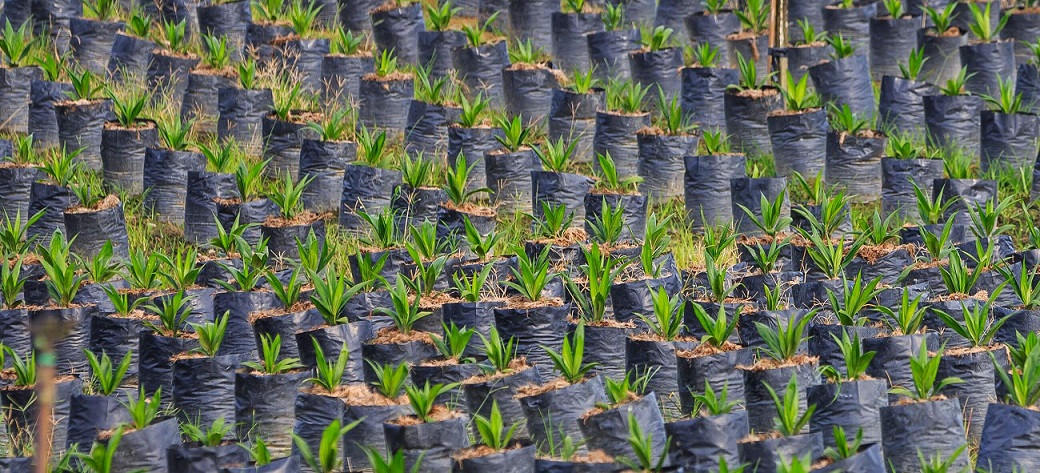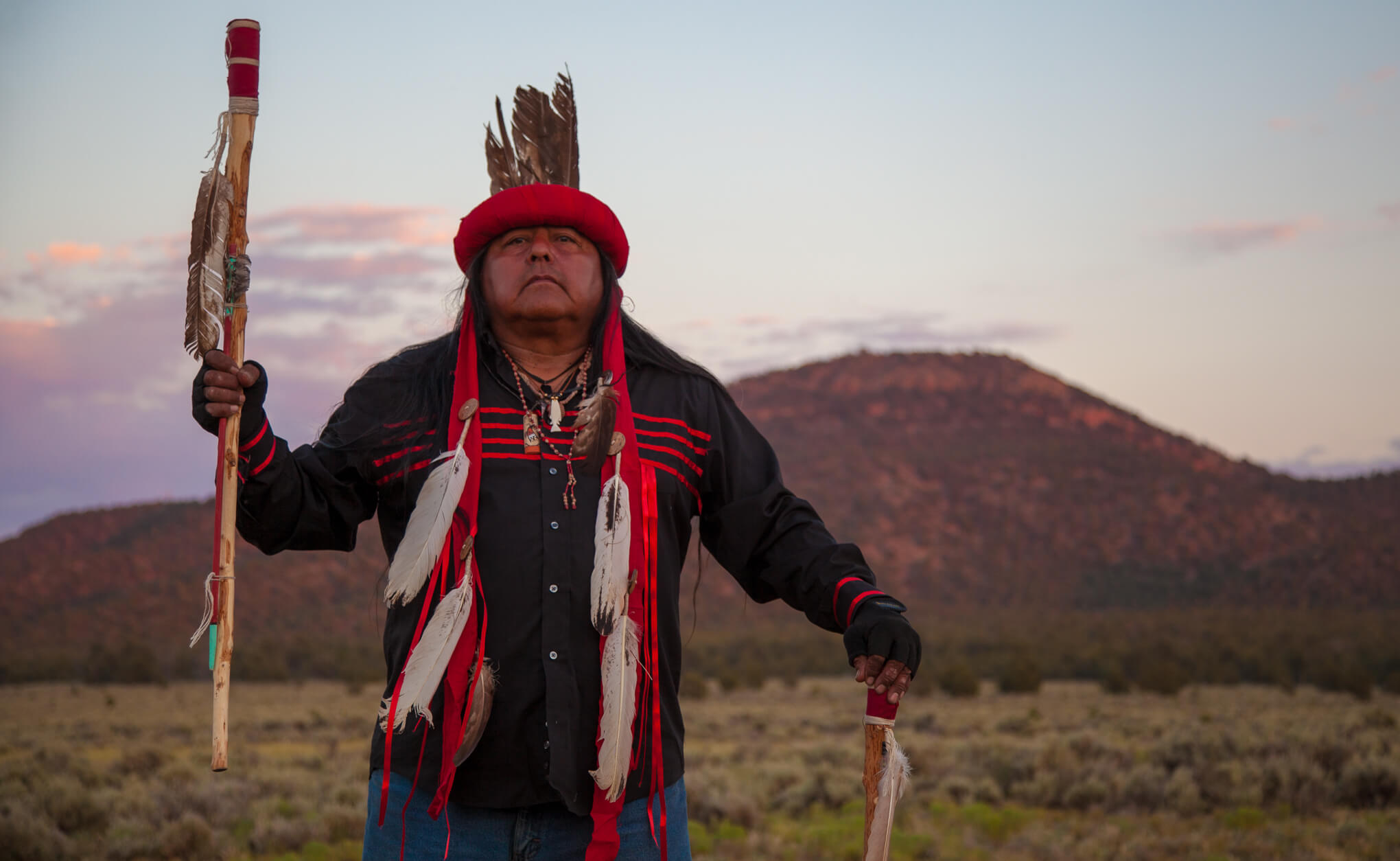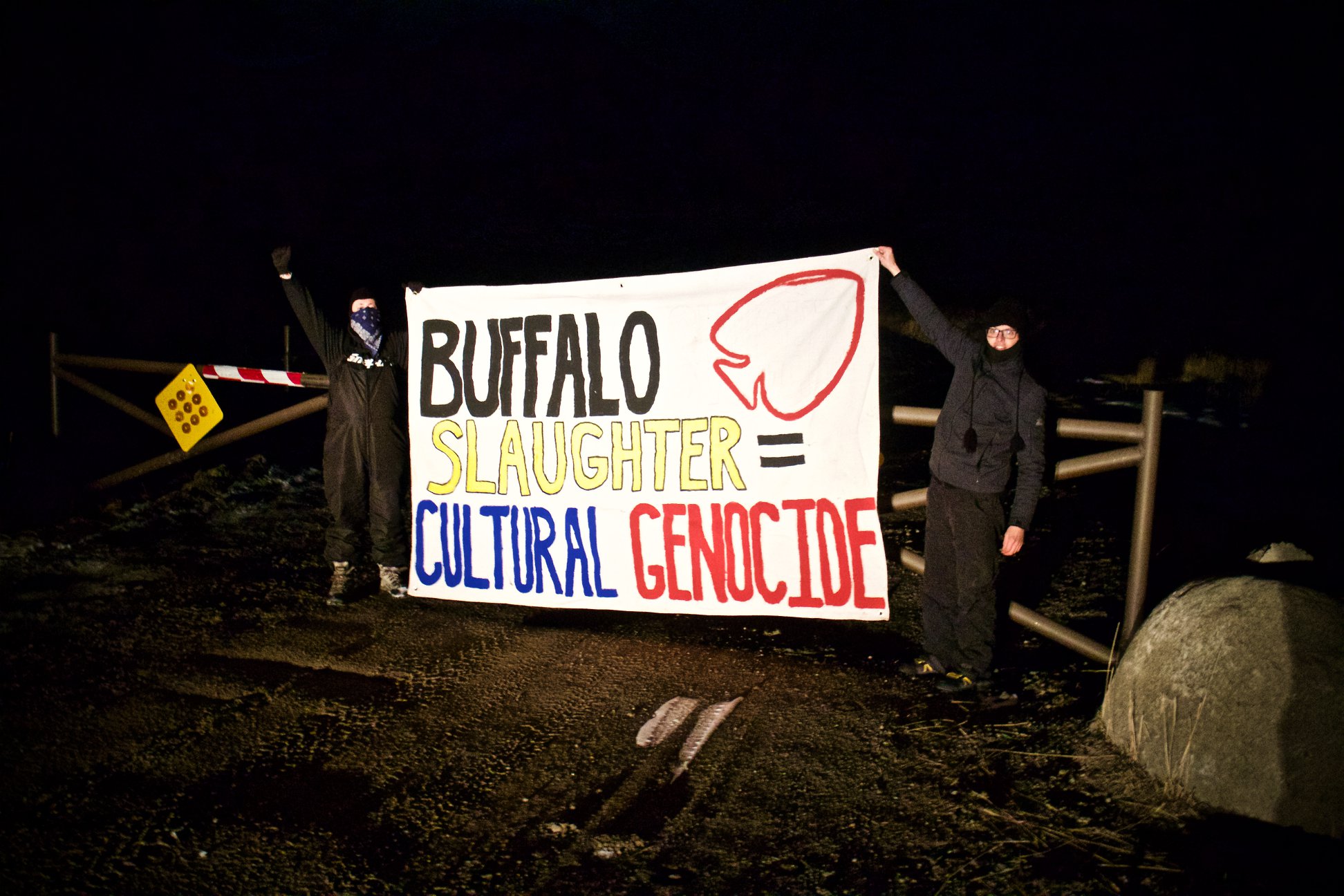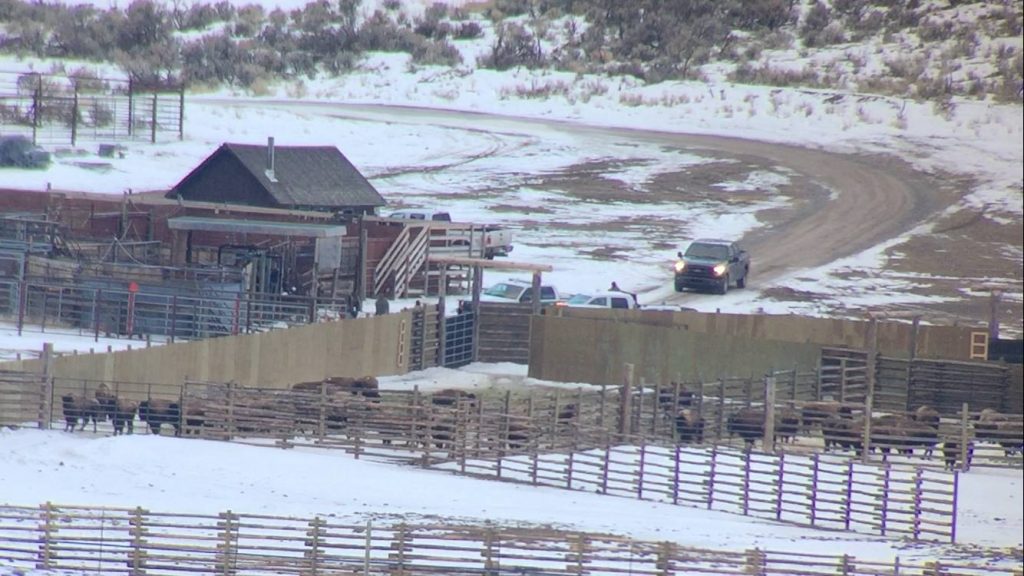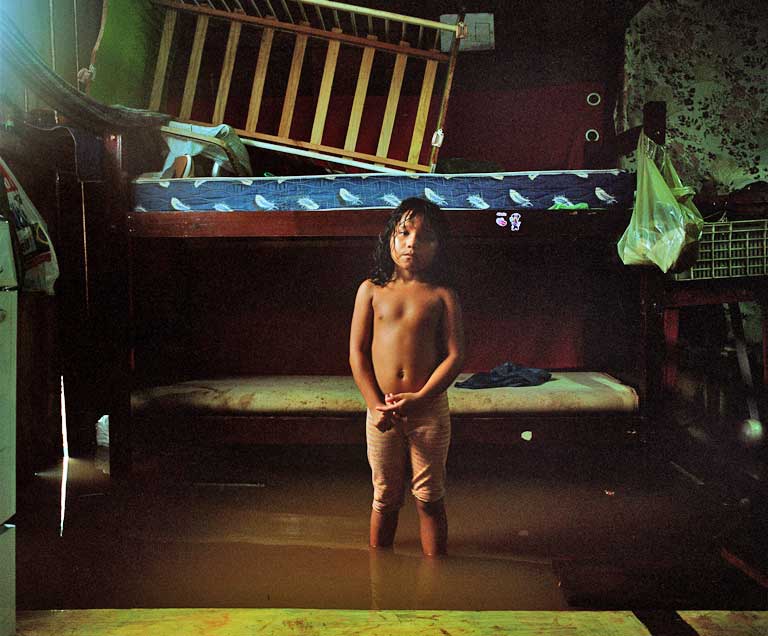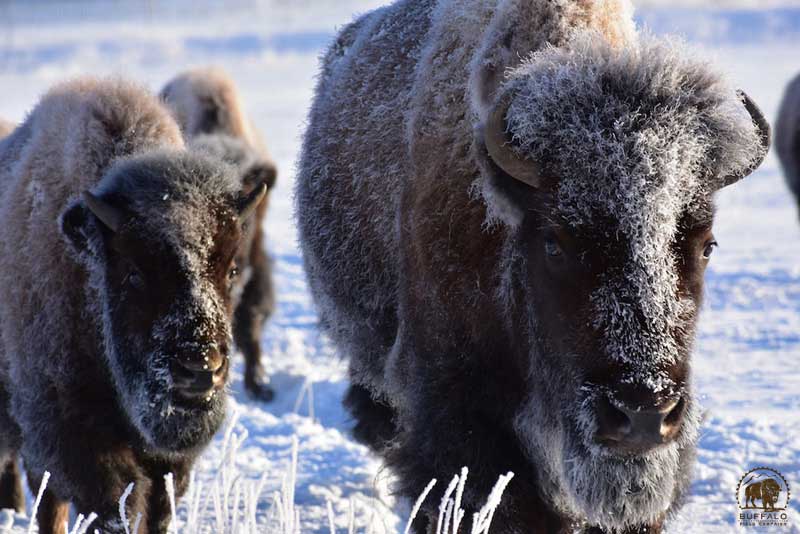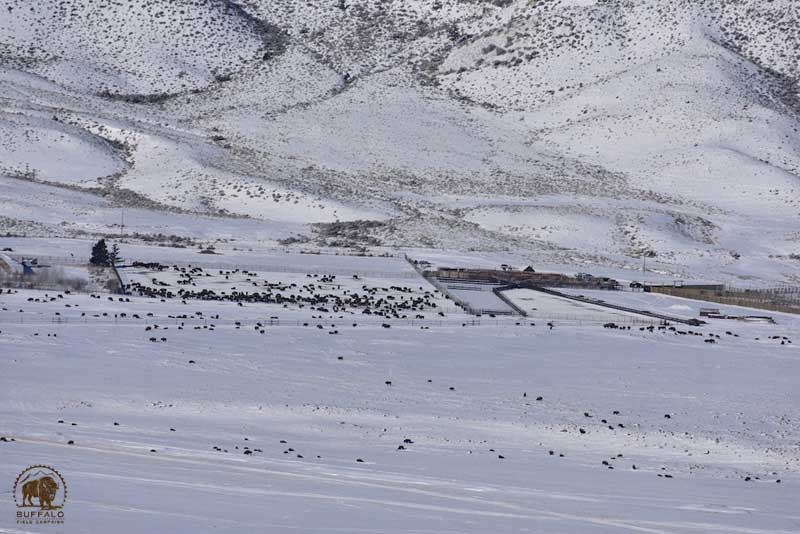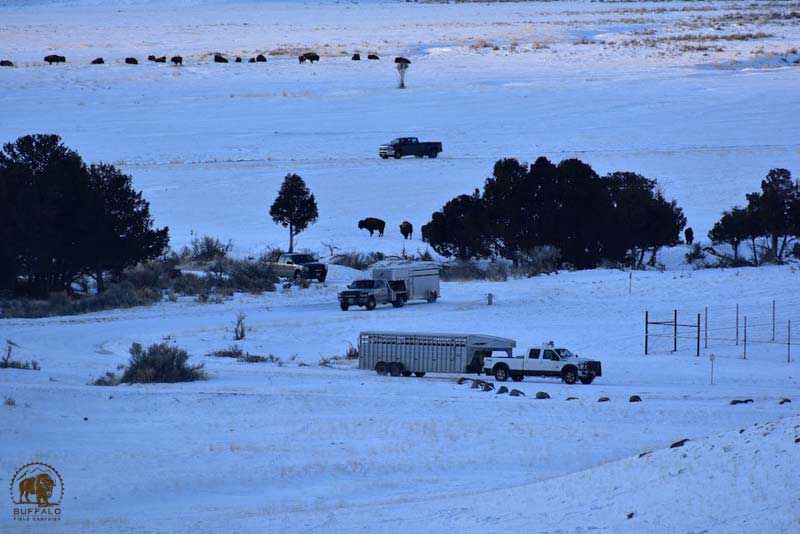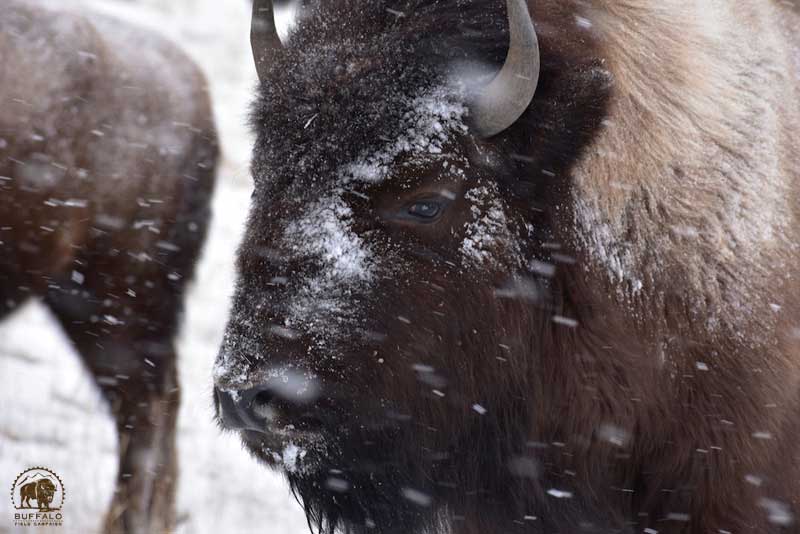At the Havasupai Prayer Gathering, Fydel Rising Sun, member of the Havasupai Tribe, sang of resisting uranium mining to the sound of his beating drum. It was 3 a.m., and the sacred fire crackled under the dark outline of Red Butte, a site of great ceremonial importance to the surrounding native nations nations beside the Grand Canyon. The sun soon crested the horizon, and color returned to the land, as well as sweltering heat. Green shrubs poked through the red dirt, their roots a stalwart defense against erosion and increasingly common dust storms, in this parched land being robbed of millions of gallons of clean water.
As explored in our previous pieces within the series, millions of gallons of clean water have been contaminated with uranium and arsenic, directly above an aquifer feeding waters such as those pictured. Moreover, Canyon Mine is accused by conservation organizations and surrounding indigenous nations of desecrating land, medicine, and water surrounding Red Butte: just six miles from the Grand Canyon and from land held sacred by the Havasupai Tribe.
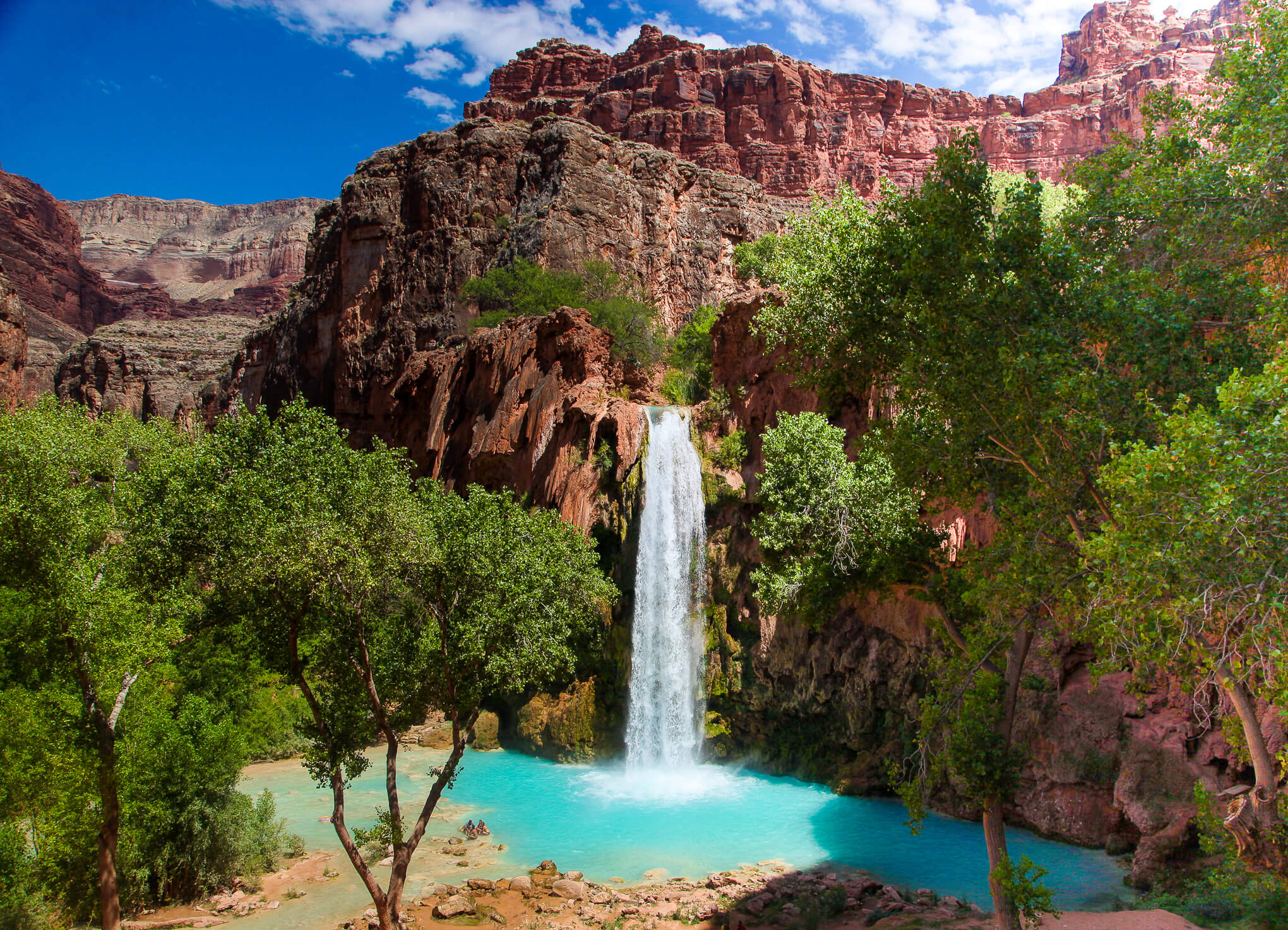
The aqua-marine waters of Havasu Falls on the Havasupai Reservation.
The president of the mine’s company, Mark Chalmers, has denied that that the tribe holds these areas sacred. In response, a four day Havasupai Prayer Gathering, the first in eight years, invited other native nations to come together beneath Red Butte for ancestral ceremonies, inter-tribal gatherings, entertainment, direct action training, and speakers.
Well over 100 people were in attendance over the course of the four-day gathering, many camping out each night for the entirety of the event. Speakers delved into a variety of topics covering past and current illegal land grabs, religious and cultural oppression, spiritual guidance, and stories of resistance. All these narratives came together to now fight the Canyon Mine’s desecration of the land surrounding Red Butte. These are their stories:
Richard Watahomigie, descendant of the first Havasupai leader, spoke to the audience about how he was able to overcome the challenges in his early life and return to his roots to help to lead the Havasupai Tribe. At the event he said he wished he was able to tell this story to more people, but hopes for his words to be shared broadly to help inspire others as well. He is pictured in front of Red Butte:
When I was five I was taken from my family by the white man. They put me in a Mormon school. I wanted to go home and started getting myself in trouble. Eventually they got tired of me and told me I was going home. I was happy. I was going home. Instead they took me to a boarding school in White River, Arizona called Theodore Roosevelt. There I got mistreated by government workers at nine years old.
Some of my relatives and people from Supai went to school there too. I tried to listen and understand them, but could only understand a little. They laughed at me and made fun of me because I couldn’t talk Supai. When I was alone I practiced and tried hard to talk my language.
From then on I went to other schools, tried to learn the white man’s way. One time I heard a native man, Chief Dan George, make a speech. He said, ‘if you finish high school, you’re going to become a half breed.’ So I ran away. I traveled, hitchhiked. I was 14 or 15 years old and eventually made it back home. Then I started over, trying to speak my own language. I finally got it. I listened to the songs with the elders at the sweat lodges and circle dances and practiced them. Now I claim myself a full blood because I got back my roots.
After getting a job to help my parents I started traveling around again. But every time I did, Supai kept calling me back. I went home and thereafter just sort of wandered around looking for a stable life. Eventually I found my wife. I quit all the bad things I did when I was young. It was hard to give up smoking, drinking, hard drugs. You might call me a junkie. That’s what I was and now I’m clean.
When I grew older I was nominated for office. I didn’t want to accept that; I wasn’t about that. I’m not a political person, but I said to myself, ‘okay I’ll just let it flow and see how it goes and see what the people think of me.’ My people voted me into office. And now I’m a member of the Havasupai Tribal Council. Now I have great admiration, love, respect for my people, my land, water, wildlife, plants, Mother Earth.”
Rex Tilousi, elder and former Chairman of the Havasupai, spoke to the Havasupai people in both the Havasupai–Hualapai language and English, encouraging the Havasupai to remember their history, continue their traditions, and continue their duty of protecting their lands:
“My great-great-grandfather asked to be buried on top of Havasu Falls. They called him Captain Borough. He got that name when the first trainload of tourists visited the Grand Canyon and saw him hiking up Bright Angel Trail with the harvest. They said, ‘look at that animal coming up that trail, look at that jackass coming up the trail, look at that borough coming up the trail.’
Later President Theodore Roosevelt stood on the canyon rim too. He wanted to make a national park and take it from those before him. Rangers say John Wesley Powell discovered this area, but native peoples were already there and regard the canyon as a place of emergence.
When Roosevelt came to our village, he gathered elders to sign papers even though they couldn’t read them. Then he said, ‘I’m taking your lands. Don’t go up to the rim anymore. No hunting or gathering here, no prayers, no sweat lodges. I don’t want you in the park.’
In 1919, they removed the peoples living there. The last Havasupai chased out was my great-great-grandfather, Borough. He refused to leave the home he loved and gave him life. But rangers went down the trail, stuck him on a mule, and forced him out. That same year he passed away and was buried at the top of Havasu Falls.
Years ago rangers asked me to work for the park. I said I needed to do prayer work before responding so spoke to my great-great-grandfather’s grave. That night I had a dream and his voice said, ‘find out why we were chased away.” I accepted the position.
The park gave me a gray and green uniform and that hat Smokey the bear wears. I found out why. They said they wanted to protect the canyon for everyone who wanted to see its wonders. But they aren’t protecting it. They are allowing this destruction.
We were given a responsibility to protect and preserve this land and water for those yet to come. We have a job to do. The ancient rock writing in our canyon tells us to protect this place. The canyon doesn’t belong to us. We belong to the canyon, to the earth, to the water. It created us and gave us life. We are fighting for our lives and for those who are yet to come.”
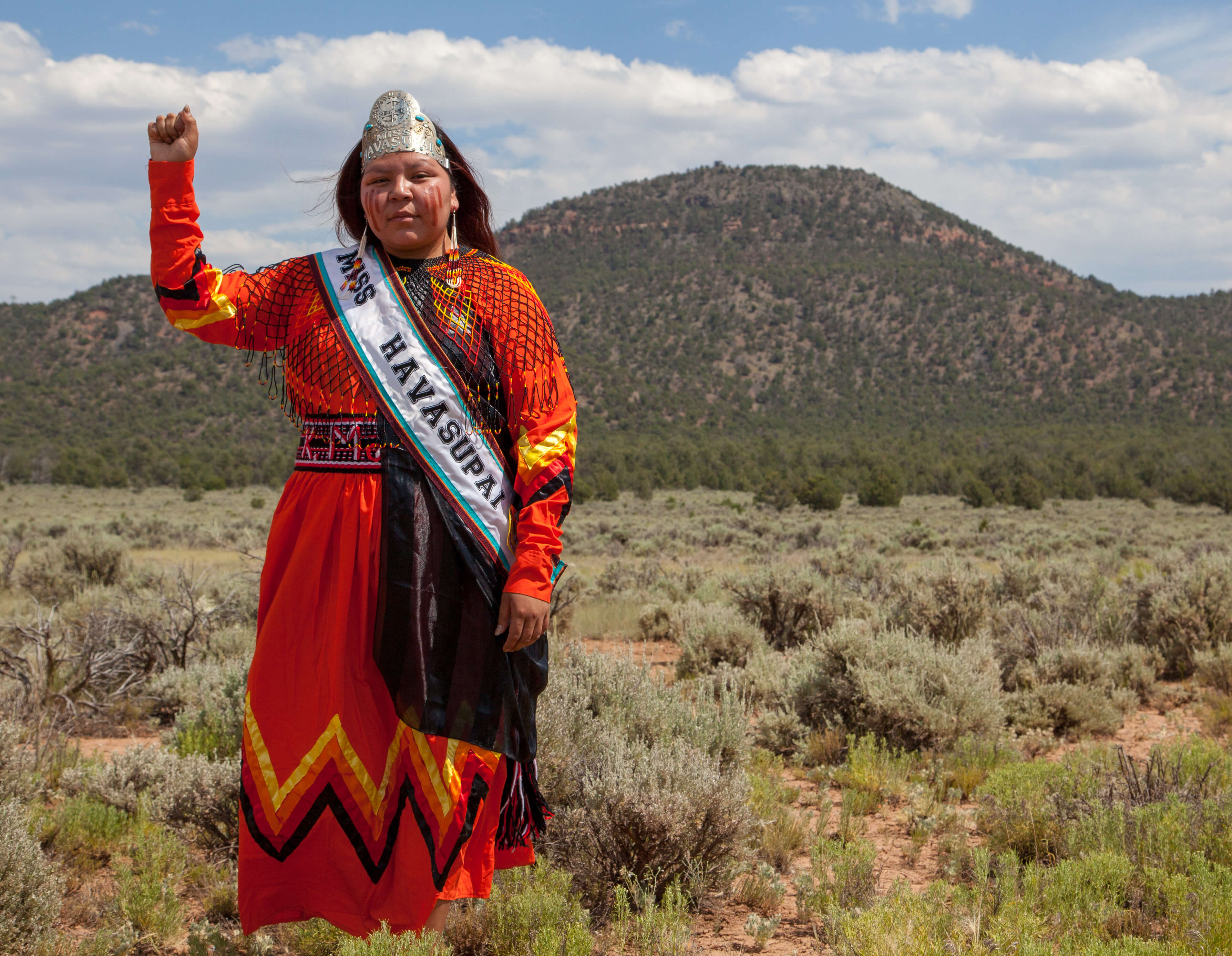
Photo: Garet Bleir
Krysta Manakaja, Miss Havasupai, spoke to IC regarding the sanctity of the area of Red Butte and the mission of the Havasupai people at the prayer gathering:
“I am standing here in front of you as an ambassador of the Havasupai, to protect my home land and the waters of the Grand Canyon. Red Butte behind me was our first home, our first land, this was where we first lived. There are a lot of our ancestors buried out here and we are here to protect them.”
In the late 70s, when the Havasupai first heard that the Canyon Mine was being developed upon land they hold sacred, it wasn’t the company who told them. Someone working in the nearby city of Tusayan noticed the development and contacted the tribe. According to Rex Tilousi, “Without letting us know, they had already scraped the ground, the sage, and underneath the dust they destroyed ancient grinding stones, baskets, the pottery work our people traded with other tribes, and even bones. They had scraped everything away getting that place ready for mining.”
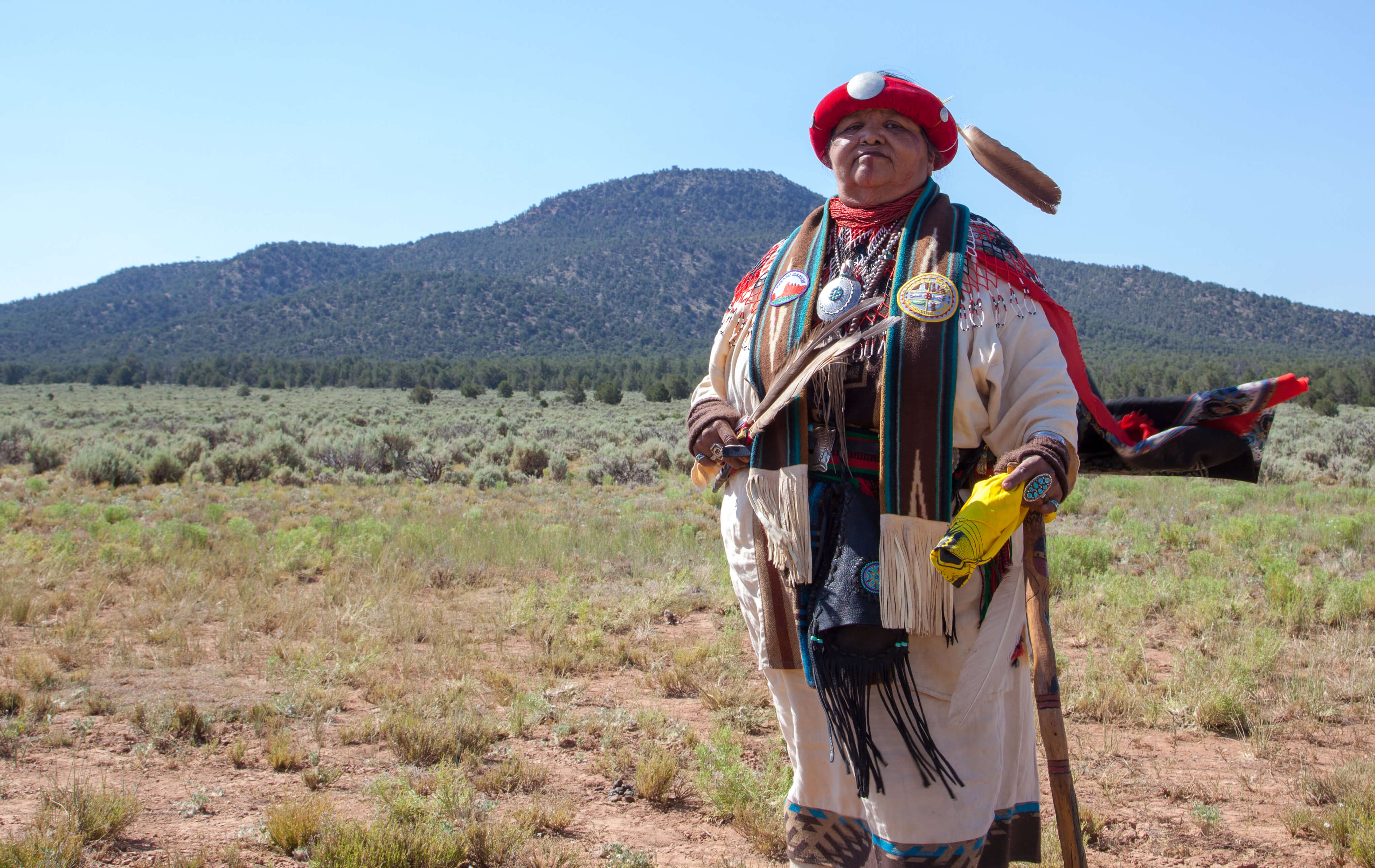
Photo: Garet Bleir
Havasupai Medicine Woman, Dianna Baby Sue White Dove Uqualla, is a third generation spiritual traditionalist, former member of the Havasupai Tribal Council and former Vice- Chairwoman for the tribe:
“Things are simple, but in this world we made it chaotic. Take away that complication and just live and breath love and have faith. The land behind me of Red Butte is sacred land to our people. You step on this ground and you are being blessed, even if you are not doing ceremony or prayer.
“This land is testing each and every one of us to see if we’re meaning what we are doing here. When you speak, speak truth. We have made lying a norm in this world which is not right. We have to go back to truth, because that’s what is the healer. We have once been the little sheep and they pulled the wool over our eyes. But now we have seen through this wool to recognize what is happening to us. We the people have the ability to take down our president but we have to walk in a force of many and share the word of respect and dignity so that all of us and all our children can survive. Right now we are in a dark place. And we’re sitting here thinking that we cannot do anything, but it’s not true. Yes, we will have to stand in the front lines and give life or give some kind of hurt, but if you’re really in the place of saying, ‘yes I do want to protect my land, my people,’ then that’s the sacrifice we make without question.
“Before you begin your journey, question yourself and ask, ‘am I ready?’ Because it does get scary. Your heart is going to flutter. Your feet are going to chatter. Your hands are going to begin to tremble. That’s human. But you can overcome these things, because we have our mind and our mind is so powerful. More powerful than we know and we have all that to give. To give and acknowledge.”
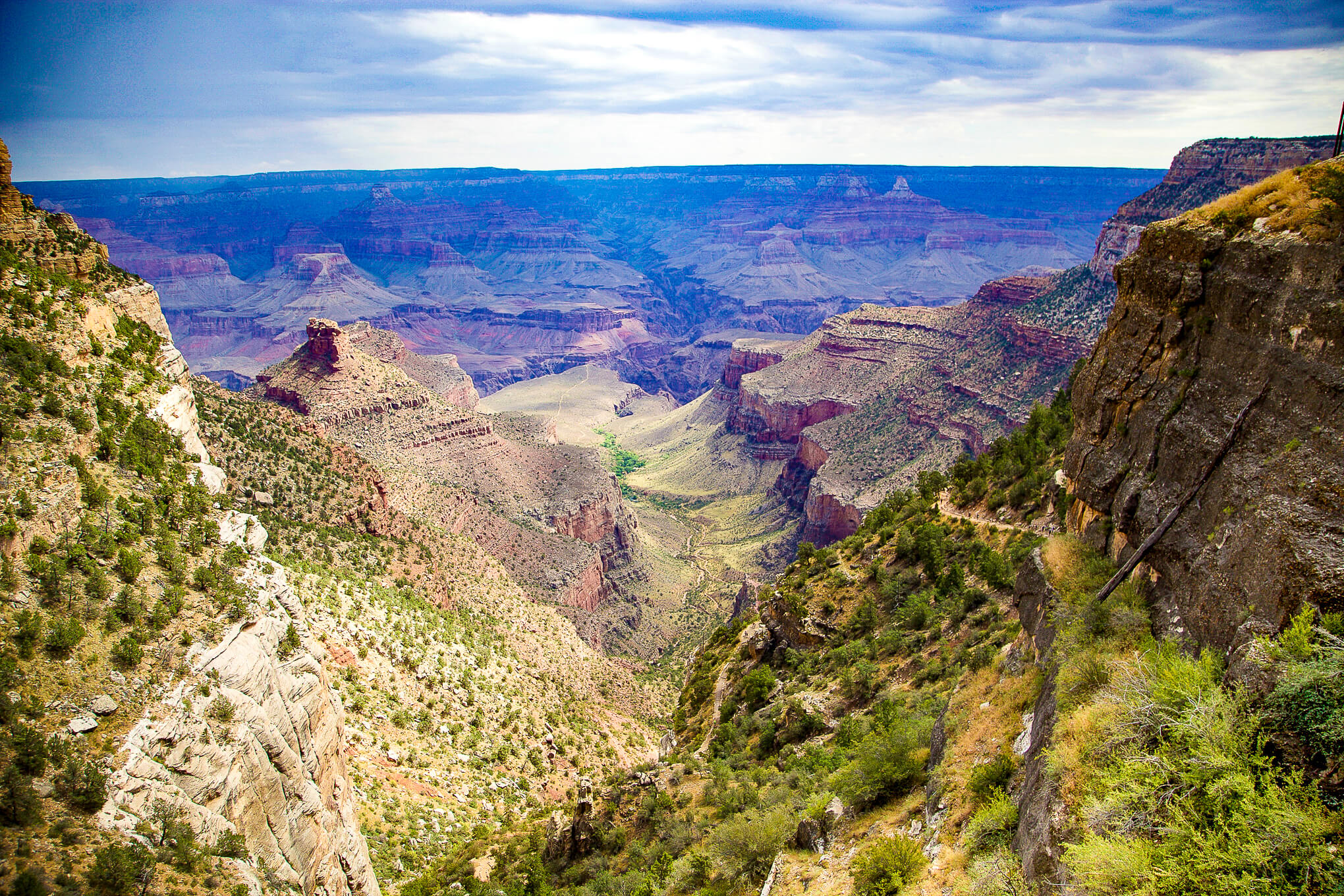
Photo: Garet Bleir
Rex Tilousi, former Havasupai Chairman, also spoke about why it is so important to resist the developments of the areas they hold sacred:
“Water is going to be just as valuable as gold in the future and that is what is happening today. Arizona calls itself the Grand Canyon State. But what are they doing about the Grand Canyon? They are allowing this destruction.
“To those of us who live in the Canyon, our religious stories and our creations stories from our elders say that this is where we all came from. Black, white, red, green, yellow, doesn’t matter what color one is, we all originated inside of the Canyon. When I hear those stories of how humans came to be, I feel this that is our mother, our grandmother, this is where we all came from, inside our mother earth.
“That’s the reason why we are fighting. Fighting for a home that gave us life, is still giving us life, and is still protecting those that lived down below. Not only us, but the many visitors who come below the rims. The visitors who have been there, if they knew what was going on today, I am sure they would sign the petition that is going around to help stop uranium mining around the Canyon.
“Projects like the Canyon Mine and the casino and tramway they want to make to the bottom at the Grand Canyon with the Escalade Project serve to make more money for those that are developing these things. It is not the idea of the native people. This idea comes from the lawyers, the developers, and the people that are going to disturb this area. Drilling holes, pumping our waters, and pumping the springs that was created by these waters. We have been told many times, when you come to a spring, talk to it before you drink, thank it after you leave, do not bother the spring. Even though I may not be here to see the end of it, I will look down from behind the clouds and say I am very proud of my people.”
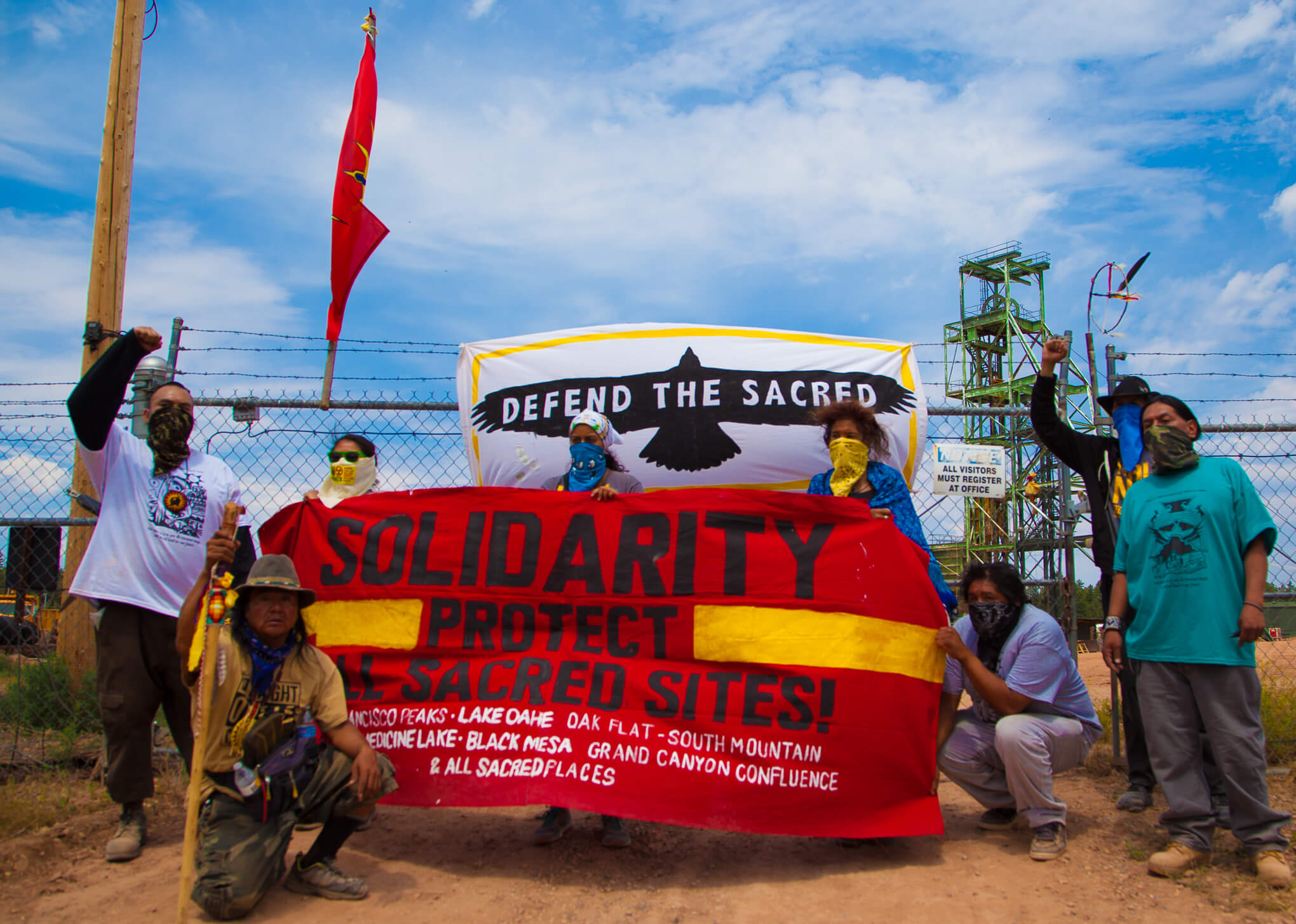
Members from the Havasupai Tribe, Navajo Nation, and Haul No take their message to the gates of the Canyon Mine, located just 6 miles south of the Grand Canyon on the site of the sacred Red Butte.
Klee Benally, volunteer with the indigenous-led activist group, Haul No and member of the Navajo Nation taught direct action trainings for the camp in preparation to resist the Canyon Mine:
“Two of my uncles worked at Canyon Mine back in the ‘80s. They helped lay concrete and build the headframe for the uranium mining shaft. Today I feel a great sense of responsibility to rectify their transgressions.”
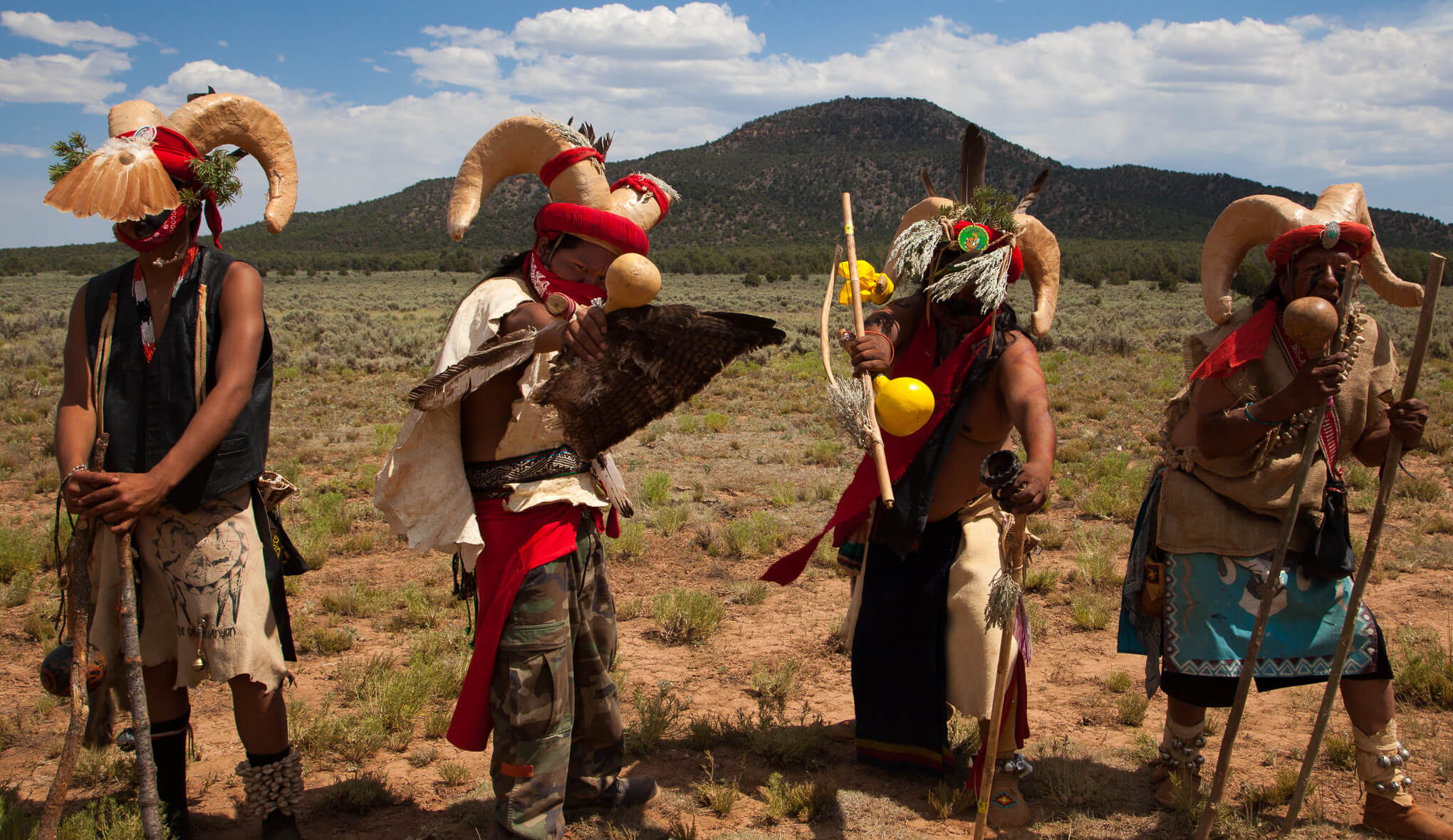
Photo: Garet Bleir
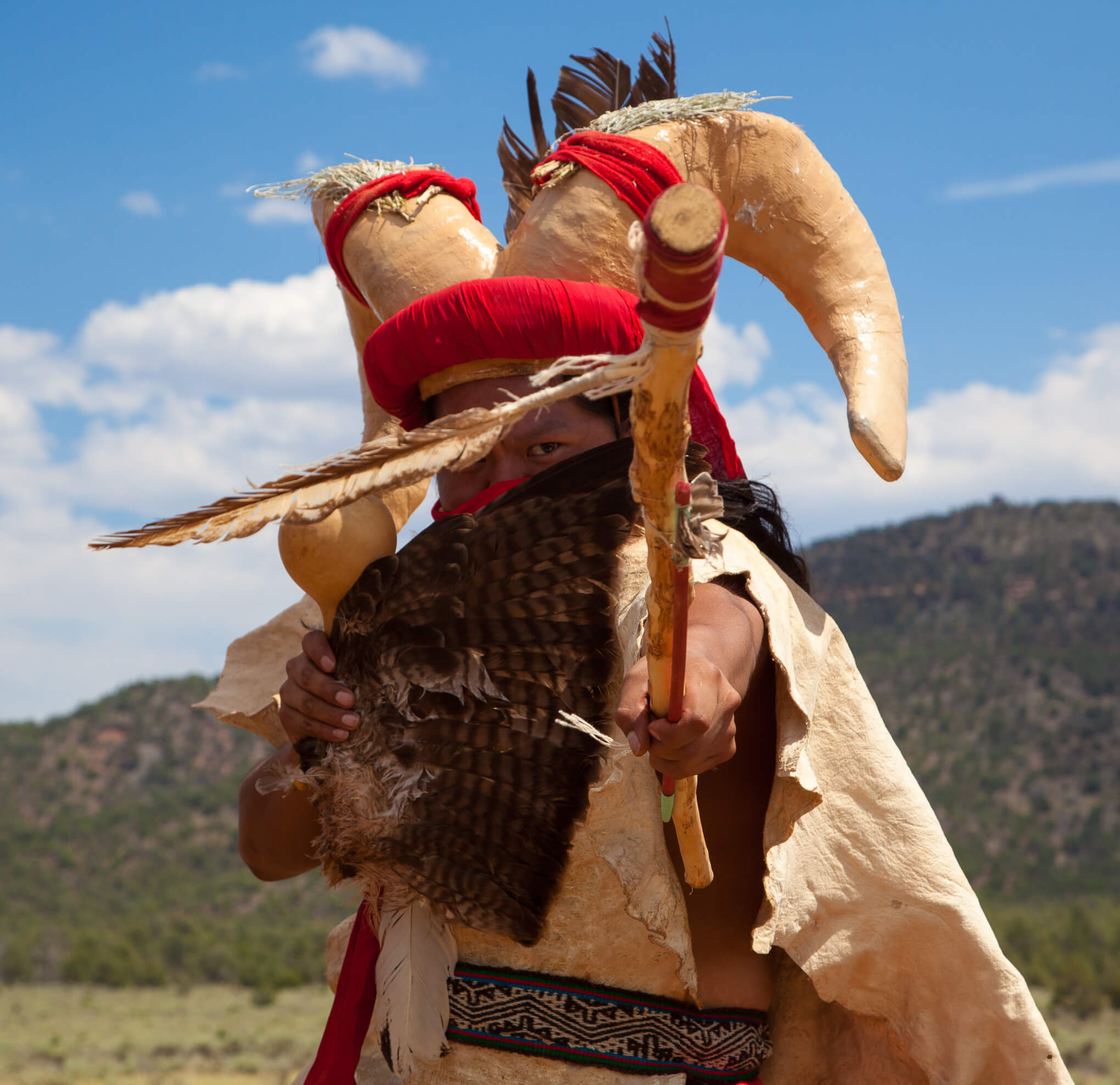
Photo: Garet Bleir
Guardians of the Grand Canyon, a group of Havasupai dancers, tour Arizona and the world while bringing back a lost tradition to the Havasupai people. The group performed the Ram Dance at the prayer gathering and IC spoke with Richard Watahomigie, who reignited these once-lost traditions:
“My brother in law and I were out hunting one day and we came upon a trail of blood. We tracked it and found two bighorn sheep. They were slaughtered. Hidden underneath bushes. I took them back to the village, did the proper blessings and buried them. The bighorn sheep are sacred to the Havasupai. When we pass away we reincarnate into the bighorn and travel along the rim of the Grand Canyon, back and forth, guarding it. That’s why the ram dancers call themselves the Guardians of the Grand Canyon.
“I took the death of those two bighorns as a sign that we needed to recreate the Ram Dance, a forgotten tradition of the Havasupai practiced over 100 years ago. With the help of a friend, a former council member as well, we got together, made replicas out of the real bighorn, and figured out a way to recreate the dance in order to honor them once again.”
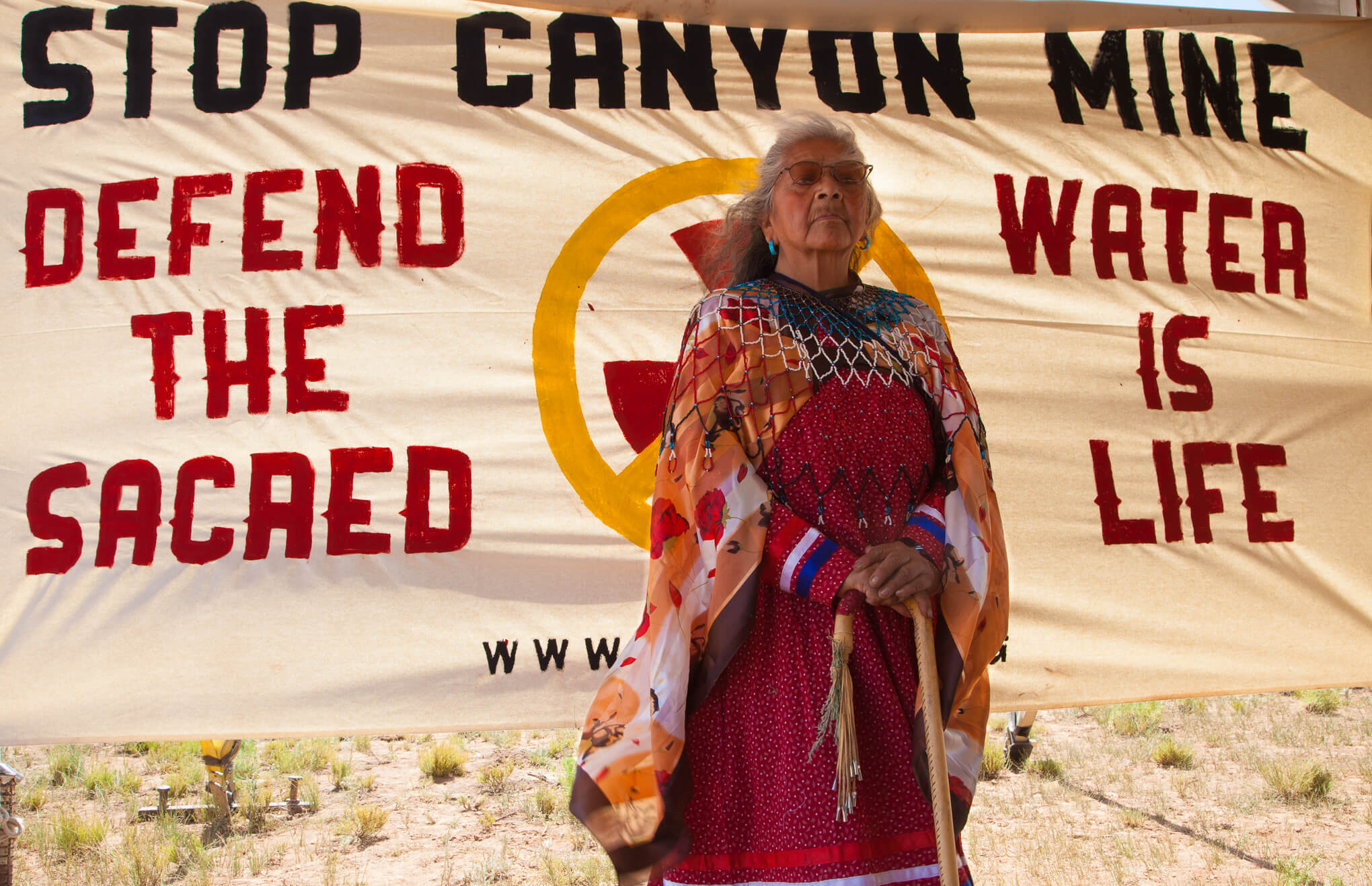
Photo: Garet Bleir
Ruth Havatone, member of the Havasupai Tribe, spoke to an audience regarding new ways of resistance to colonization through the legal system and how colonization has forced the tribe from an agrarian society to a tourist economy:
“Nowadays we can’t fight with arrows or guns, we have to educate our children and send them to college and law school so we can understand how to fight back with the white man and their language, their laws, and their regulations. It is very sad what is going on here. We want to stop the uranium mining and we want the public to recognize that we the Havasupai are here and the dangers of the uranium contamination. It’s not right.
“After the federal government took away most of our land and pushed us into the canyon, we don’t even know how to make money down there. We barely survive with the tourists. In winter we don’t have much money. No tourists buying our groceries or eating in our cafes, only us natives are there surviving on little money. But we survive.
“We are not used to the public view. The tourists don’t see some of us because we are shy of the white people that arrive to our village. Some of us, the older ones, we are watching but they don’t see us because we are hiding in the bushes or the canyon rocks, watching them walk by.”
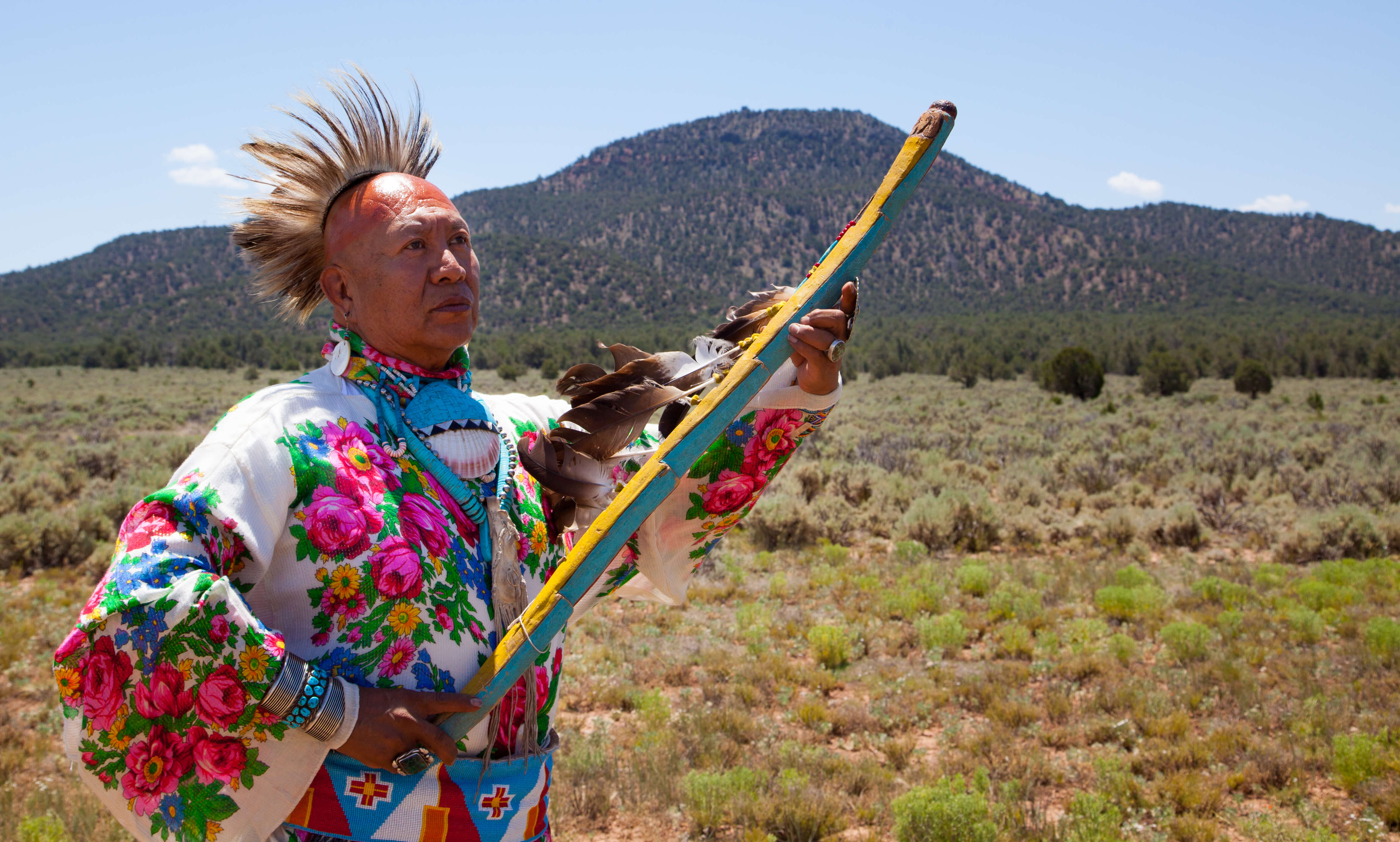
Photo: Garet Bleir
Uqualla, a Havasupai Medicine Man and Spiritual Traditionalist, spoke throughout the four-day gathering about returning to listening to the earth and finding balance within one’s self. Uqualla also facilitates workshops and ceremonial life coaching sessions throughout the Southwest.
“Everyone that is birthed on this Mother Earth has dark and light, good and bad, masculine and feminine. Learn how to bring that into a magnificent balance. The Mother Earth stated at the beginning, ‘I will give you what it is that you ask for. Not what you ask for from the language or the voice, but what you put forth in your actions.’
“Everything about Mother Earth speaks in symbolism. Learn how to pull from the information given by the surroundings. The medicines of wind, the medicines of the water, the medicines of fire, the medicines of rock. The Mother Earth knows how to take care of itself. And it will take care of itself. It’s going to be the greatest teacher for all of us so go out to her daily and allow for yourself that connection in whatever way you wish that is comfortable for you do so. Even if it is just a step out there. That one moment of total blankness will allow for that infusion of Mother Earth to come through. Allow for yourself to make a connection with the Mother Earth and have her be a constant watcher, healer, teacher, and leader for you.
“We are the children of the Mother Earth and every single one of them walk and trash and abuse the earth beneath them. It’s a surface that gives us the ability to walk, talk, breath, sing, dance. And that is important for us to understand. Without that where would we be? We would not be.”
Garet Bleir is an investigative journalist working for Intercontinental Cry documenting human rights and environmental abuses surrounding uranium mining in the Grand Canyon region. To follow along with interviews and photos highlighting indigenous voices and to receive updates on his 12 part series for IC, follow him on Instagram or facebook.
This article is a part of #GrandCanyonFutures, an ongoing deep journalism series published by IC in partnership with Toward Freedom.
